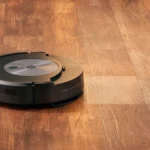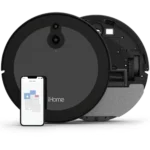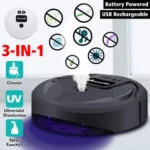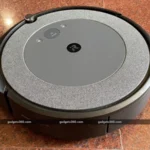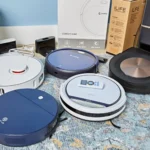Have you ever experienced your smart vacuum cleaner losing suction power or not being able to navigate properly? Despite their advanced technology, these machines require regular maintenance to function efficiently and effectively. Neglecting maintenance can result in a shorter lifespan for the machine, compromising its ability to keep your home clean. In this guide, we will discuss the importance of regular maintenance for your smart vacuum cleaner and provide a step-by-step guide on how to keep it in top condition. So, let’s dive in and discover how to get the best out of your smart vacuum!
Benefits of Regular Maintenance
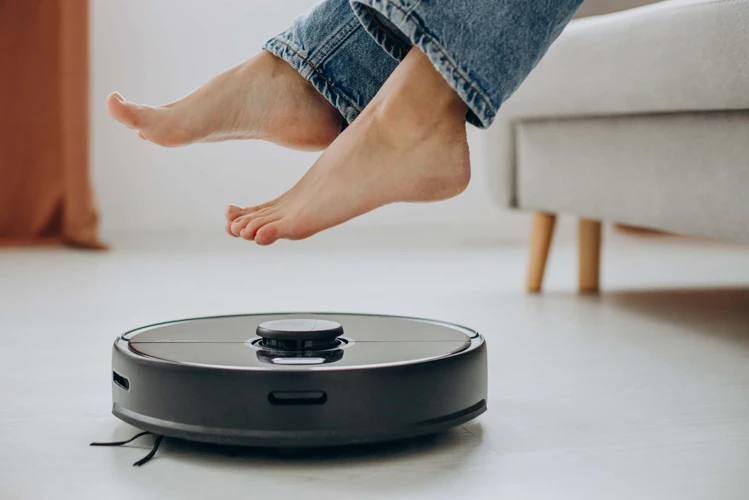
Keeping your smart vacuum cleaner up-to-date and well-maintained is crucial to get the most out of your investment. Regular maintenance of your smart vacuum cleaner can bring about a multitude of benefits that go beyond just ensuring that your floors remain clean. It can help to improve the efficiency of the machine, extend its lifespan, and keep it in great working condition. In this section, we will explore these benefits in detail and provide tips for how you can perform maintenance on your smart vacuum cleaner. For more detailed information on the topic, check out our Smart Vacuum Maintenance Guide for an in-depth look at the best practices for maintaining your smart vacuum cleaner.
Improved Efficiency
Regular maintenance of your smart vacuum cleaner can ensure improved efficiency in its operations. When you fail to take care of your device, it can experience wear and tear in various components leading to suboptimal performance. With regular maintenance, you can help your machine function optimally, reducing the need to spend money on repairs or replacements.
Here are some ways maintenance can improve efficiency:
- Reduction in Clogging: When the dustbin and filters of your smart vacuum cleaner are clogged with dirt or debris, the device’s efficiency reduces. It can lead to poor suction power and reduced performance, making cleaning a daunting task. Regularly cleaning the dustbin and filters can ensure that your machine retains its suction power and is as effective as it was when it was new.
- Increased Battery Life: If your smart vacuum cleaner uses a rechargeable battery, poor maintenance can affect its battery life, leading to reduced cleaning time. Regular maintenance of your device, including charging the battery correctly, can extend its battery life and ensure the device works for longer, reducing the need for frequent charging and hence improving its efficiency.
- Optimized Brush and Roller Functionality: The brushes and rollers of smart vacuum cleaners can easily wear out, leading to reduced efficiency when cleaning. Regularly replacing brushes and rollers can ensure that your device operates at optimal levels, ensuring that you can maintain your floors and carpets with less effort and time.
Maintaining the software of your smart vacuum cleaner can also improve its efficiency. Whenever the manufacturer releases a software update, install it to help overcome bugs or flaws that might reduce the device’s efficiency. Ignoring software updates can lead to reduced performance, making it challenging for the machine to detect dirt and avoid obstacles while cleaning floors.
Improved efficiency through regular maintenance can save on time and reduce the need to spend money on repairs or replacements.
Extended Lifespan of Machine
Regular maintenance is not just important for improving the efficiency of your smart vacuum cleaner, but it also plays a significant role in extending the lifespan of your machine. With regular maintenance, you can keep your machine running at peak performance, prevent major malfunctions, and avoid costly repairs.
Here are some benefits of regular maintenance that can help extend the lifespan of your machine:
| Benefits of Regular Maintenance | Description |
|---|---|
| Prevent Wear and Tear | Regular maintenance such as cleaning the dustbin, replacing filters, and brushes can prevent the buildup of dirt and debris that can cause wear and tear on your machine. When the machine has to work harder to pick up dirt from clogged filters or brushes, it can shorten the lifespan of your machine. |
| Stop Potential Damage | Regular maintenance can also help you identify any potential damage in the early stages. Early detection of damage can stop a minor issue from turning into a major problem. When you fix minor damages promptly, it prevents any further damage that may lead to costly repairs or replacement of parts. |
| Maximize Performance | A well-maintained machine will function at maximum performance, meaning it can perform at its peak abilities for a more extended period. Ignoring the simple maintenance tasks as checking on software updates, replacing rollers or brushes, can cause a gradual decline in performance and efficiency. |
| Save Money | By performing regular maintenance, you are investing in the longevity of your machine, and avoiding replacing it prematurely. Preventing issues before they escalate can save you money in costly repairs or purchasing a new smart vacuum cleaner altogether. |
Regular maintenance of your smart vacuum cleaner ensures that it works at optimum performance throughout its lifespan. This kind of maintenance will also help you identify a problem before it causes irreversible damage that may shorten the machine’s life. Regular maintenance is beneficial in maximizing performance, prolonging the machine’s lifespan, saving money, and keeping your house clean.
Ensured Cleanliness
One of the most crucial benefits of regularly maintaining your smart vacuum cleaner is the ensured cleanliness of your space. A clean home is not only integral for aesthetic purposes but also for your overall health and well-being. Neglecting your vacuum cleaner’s maintenance can result in poor air quality and ineffective cleaning.
Dustbin Cleaning: One part of regular maintenance that you shouldn’t overlook is cleaning the dustbin of your smart vacuum cleaner. Over time, the dustbin gets clogged with dirt, hair, and debris, which then restricts the machine’s suction power, preventing it from cleaning the floors effectively. To avoid this, empty the dustbin after every cleaning cycle and clean it thoroughly with soap and water weekly.
Filter Maintenance: The smart vacuum cleaner’s filters are responsible for trapping dirt and debris inside the dustbin. Over time, the filters can get clogged, reducing the suction power and air quality. You should replace the filters at least once a month to ensure optimal performance.
Brushes and Rollers: Your smart vacuum cleaner’s brushes and rollers work tirelessly to collect dirt, debris, and pet hair from your carpets, floors, and rugs. As a result, these parts generally wear down, causing the vacuum to collect less dust and hair. Replacing these parts every three to six months can significantly enhance the lifespan of your vacuum cleaner.
Keeping your smart vacuum cleaner up to date with the latest software updates also ensures that it runs smoothly and offers the best performance possible. Look for software updates on your manufacturer’s website and promptly install them to avoid any technical hitches in the future.
By following these maintenance steps, you can keep your smart vacuum cleaner working efficiently and clean your home more effectively, guaranteeing the cleanliness that you and your family deserve.
How to Perform Regular Maintenance
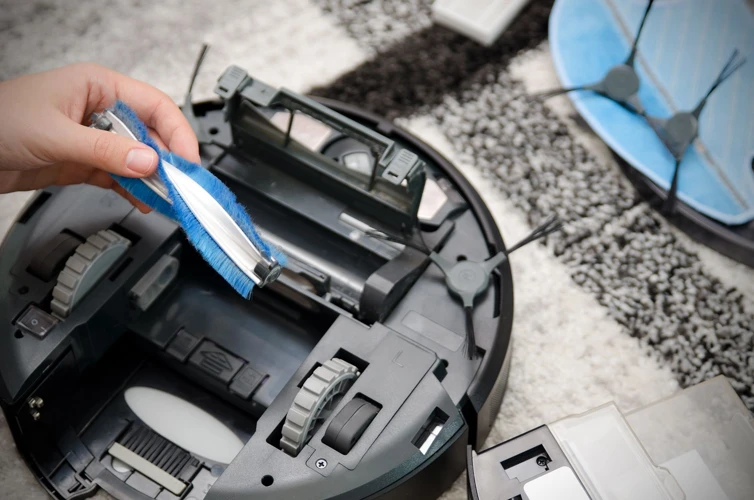
Now that you understand why regular maintenance is crucial for your smart vacuum cleaner, it’s time to learn how to perform it. Maintaining your device may seem perplexing at first, but it’s quite simple once you get the hang of it. By taking just a few minutes each week to perform these maintenance tasks, you can ensure that your machine performs optimally for years to come. Let’s dive into the step-by-step process of maintaining your smart vacuum cleaner.
Cleaning the Dustbin and Filters
One of the most important aspects of regular maintenance for your smart vacuum cleaner is cleaning its dustbin and filters. Over time, dust, dirt, and debris can accumulate in the dustbin and clog the filters, reducing the vacuum’s suction power and overall efficiency. This can result in a poor cleaning performance and even damage to the machine if left unattended.
Cleaning the Dustbin:
To clean the dustbin, follow these steps:
| Step | Action |
|---|---|
| Step 1 | Remove the dustbin from the vacuum cleaner |
| Step 2 | Empty the contents of the dustbin into a trash can |
| Step 3 | Use a soft-bristled brush to remove any remaining dirt or debris from inside the dustbin |
| Step 4 | Wash the dustbin with soap and water |
| Step 5 | Dry the dustbin completely before reattaching it to the vacuum cleaner |
Cleaning the Filters:
To clean the filters, follow these steps:
| Step | Action |
|---|---|
| Step 1 | Remove the filters from the vacuum cleaner |
| Step 2 | Tap the filters gently to remove any loose dust or debris |
| Step 3 | Wash the filters with soap and water |
| Step 4 | Rinse the filters thoroughly with clean water |
| Step 5 | Air dry the filters completely before reattaching them to the vacuum cleaner |
By cleaning your smart vacuum cleaner’s dustbin and filters regularly, you can ensure that it operates at peak efficiency, picking up dirt and debris more effectively and extending the lifespan of the machine. So make sure to add this task to your regular maintenance routine.
Replacing Brushes and Rollers
Over time, the brushes and rollers on your smart vacuum cleaner can become worn down, which can compromise the efficiency of the machine. It’s important to replace these parts regularly to ensure your vacuum is functioning optimally.
Brushes and Rollers are essential components of your smart vacuum cleaner. The brushes are used to loosen and pick up dirt and debris from the floor, while the rollers help to direct the debris into the dustbin. Over time, the bristles of the brushes can wear down or become tangled with hair and other debris, which can reduce their effectiveness. Similarly, the rollers can become clogged with dirt and debris or become damaged, which can lead to issues with the vacuum’s navigation and suction power.
To replace the brushes and rollers, consult the manufacturer’s instructions for your particular model of smart vacuum cleaner. In general, the process involves removing the old brushes or rollers and inserting new ones. It may be necessary to use some basic tools to complete the replacement.
Here is a table outlining the steps for replacing brushes and rollers:
| Step | Description |
|---|---|
| 1 | Turn off the vacuum and unplug it from the power source. |
| 2 | Locate the brushes or rollers that need to be replaced. |
| 3 | Remove any screws or fasteners that are holding the brushes or rollers in place. |
| 4 | Remove the old brushes or rollers from the vacuum. |
| 5 | Insert the new brushes or rollers into the vacuum. |
| 6 | Secure the new brushes or rollers in place with screws or fasteners. |
| 7 | Turn on the vacuum and test it to ensure that the new brushes or rollers are functioning properly. |
By following these steps and replacing your brushes and rollers as needed, you can help ensure that your smart vacuum cleaner is operating at peak performance and picking up dirt and debris efficiently.
Checking for Software Updates
Keeping your smart vacuum cleaner’s software up-to-date is crucial to ensure its proper functionality. By regularly checking for software updates, you can avoid potential issues and ensure that your device is always operating at its highest efficiency. Here are some steps to follow for checking and updating your vacuum cleaner’s software:
- Step 1: Check for Updates – First, make sure that your smart vacuum cleaner is connected to Wi-Fi. This will allow for automatic software updates when available. Otherwise, check the manufacturer’s website for software updates and download the latest version.
- Step 2: Prepare for Installation – Ensure that your vacuum cleaner is charged and turned off. Additionally, close all active applications to prevent any interruptions during the installation process.
- Step 3: Install Software Update – Follow the manufacturer’s instructions for installing the software update. This may involve connecting your vacuum cleaner to a computer or simply initiating the installation from your mobile device.
- Step 4: Restart and Test – Once the software update has been installed, restart your vacuum cleaner and test its functions to ensure that everything is working correctly.
Remember, regularly checking for software updates will not only help prevent potential issues, but it will also ensure that your smart vacuum cleaner is running efficiently and effectively. So, make sure to check for updates according to the manufacturer’s recommended schedule.
When to Perform Maintenance
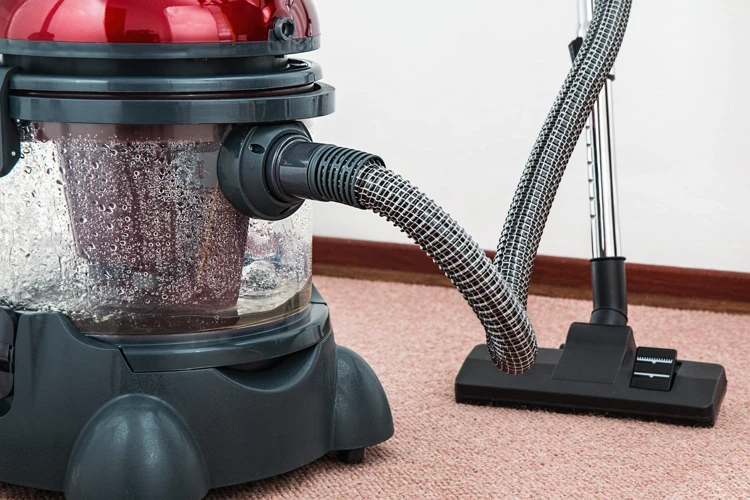
One of the most important aspects of owning a smart vacuum cleaner is ensuring it receives proper maintenance. But the burning question on most people’s minds is when exactly is the right time to perform maintenance? The truth is, neglecting regular upkeep can lead to costly repairs and even render your machine useless. In this section, we’ll dive into the specifics of when and how often to service your vacuum cleaner to avoid potential issues down the road. Whether you’re a seasoned smart vacuum owner or a newcomer, these tips will surely come in handy.
Regular Maintenance Schedule
Keeping to a regular maintenance schedule is essential for the optimal performance of your smart vacuum cleaner. By creating a routine you can ensure that you get the most of your investment for years to come. Here are some tips that can help you develop a regular maintenance schedule:
| Task | Frequency |
|---|---|
| Cleaning the dustbin and filters | After every use |
| Replacing brushes and rollers | Every 6-12 months or as needed |
| Checking for software updates | Monthly or as instructed by the manufacturer |
Regular cleaning of the dustbin and filters is necessary to prevent dust build-up and maintain the suction power of your vacuum cleaner. It is recommended to clean the dustbin and filters after every use. This will help your smart vacuum to work efficiently and keep your living space clean.
Replacing brushes and rollers will keep your vacuum cleaner running smoothly. While some brushes and rollers may last for up to a year, the frequency of replacement may vary depending on usage. It is recommended to replace brushes and rollers every 6-12 months or as needed.
Checking for software updates is also an important part of a regular maintenance routine. By ensuring that the vacuum cleaner software is up-to-date, you can rest assured that it is running at its best performance. It is recommended to check for updates monthly or as instructed by the manufacturer.
By following a regular maintenance schedule, you can avoid potential problems with your smart vacuum cleaner and maximize its lifespan. A good routine can help you save money, as well as time and energy, in the long run.
Indications for Immediate Attention
As a responsible smart vacuum cleaner owner, you must be vigilant in checking for signs that your machine needs immediate attention. Here are some things you should look out for:
- Noise: Unusual or loud noise emitting from your smart vacuum cleaner is a clear indication that something is wrong. It could be a result of something stuck in the brushes or the motor’s bearings wearing out. In either case, it is best to shut off the machine and inspect it immediately.
- Lack of Suction Power: Smart vacuums rely heavily on suction power to clean your floors effectively. If you notice a lack of suction power, it could be due to a clogged dustbin, dirty filters or the vacuum’s motor. Clean or replace any necessary parts immediately.
- Irregular Movement: Navigation is vital for your smart vacuum cleaner to work correctly. If your smart vacuum cleaner moves sporadically, gets stuck frequently or avoids certain areas, it could indicate a problem with its sensors or software. Inspect and troubleshoot the issue straight away to avoid further problems.
- Error Messages: Most smart vacuum cleaners come with built-in diagnostic features that alert you to any issues. If you receive any error messages or notifications, make sure to investigate promptly to resolve any problems before they escalate.
As preventative maintenance is always better than reactive, noting these indications can help troubleshoot and solve issues quickly. Regular maintenance efforts can prevent these issues from occurring, and avoiding these issues lets your vacuum cleaner last long and work seamlessly.
Common Issues and Troubleshooting
Smart vacuum cleaners are becoming increasingly popular due to their convenience and efficiency in keeping our homes clean. However, like any other machine, they are not immune to problems. It can be perplexing when your smart vacuum cleaner is not functioning as it should. Fortunately, there are some common issues that can be resolved through troubleshooting. In this section, we will go over some of these issues and provide helpful tips to get your smart vacuum cleaner back in good working order. So, let’s dive in and explore some of the common issues and how to troubleshoot them.
Loss of Suction Power
One of the common issues that smart vacuum cleaners may face is a loss of suction power. The suction power is a crucial element in the functioning of a vacuum cleaner, and its efficiency plays a vital role in ensuring that the device functions well. A loss of suction power can make the vacuum cleaner ineffective at picking up dust and debris, making it essential to troubleshoot the issue as soon as possible.
Here are some of the potential reasons why your smart vacuum cleaner may be experiencing a loss of suction power:
- Clogged filters: One of the primary reasons for a loss of suction power is clogged filters. Filters are responsible for trapping the dirt and debris collected by the vacuum cleaner. Over time, filters can become clogged with dust, reducing the suction power of the vacuum cleaner. Cleaning or replacing the filters regularly can prevent this issue.
- Blockages in the hose: Another reason for a loss of suction power could be blockages in the hose. Long hair, large debris, or small toy parts can get stuck in the hose, making it difficult for the vacuum to work efficiently. Clearing out any blockages can restore suction power.
- Dirty dustbin: A dirty dustbin can also affect suction power. When the dustbin is full, airflow is disrupted, which can reduce suction power. To fix this issue, empty the dustbin regularly.
- Worn out brushes and rollers: Brushes and rollers are responsible for lifting the dirt and debris from the floor. When they become worn out or damaged, they may not perform as efficiently, leading to a loss of suction power. Replacing worn-out brushes and rollers can help restore suction power.
- Damaged motor: In some cases, a loss of suction power could be a sign of a damaged motor, which will need to be replaced by a professional.
Conclusion: Understanding the potential causes of a loss of suction power in a smart vacuum cleaner can be instrumental in troubleshooting the issue. Regular maintenance, such as cleaning filters, clearing blockages, and emptying the dustbin, can help prevent the issue from occurring. If the problem continues, seeking professional assistance may be necessary to replace damaged parts or repair the motor.
Navigation Issues
Navigation issues can be one of the most frustrating problems to encounter when using a smart vacuum cleaner. Whether it’s getting stuck in a particular area or failing to navigate the room properly, these issues can impede the ability of the cleaner to do its job. Here are some common navigation issues and tips on how to troubleshoot them:
1. Inaccurate Mapping: One common navigation issue for smart vacuum cleaners is inaccurate mapping. This occurs when the cleaner fails to accurately scan and map the room, leading to navigation problems. To troubleshoot this issue, try resetting and recalibrating the cleaner to ensure it is accurately scanning the room.
2. Obstacle Detection: Another common navigation issue is obstacle detection. This can cause the cleaner to get stuck or repeatedly bump into objects, preventing it from cleaning the entire room. To address this issue, check the sensors on the cleaner to see if they need to be cleaned or replaced.
3. Poor Wi-Fi Signal: Smart vacuum cleaners rely on a stable Wi-Fi connection to accurately navigate a room. If the Wi-Fi signal is weak or nonexistent, the cleaner may not be able to navigate properly. To address this issue, try moving the cleaner closer to the Wi-Fi router or using a Wi-Fi extender to boost the signal.
4. Outdated Software: Finally, outdated software can also lead to navigation issues for smart vacuum cleaners. Regularly check for software updates and install them as soon as they become available to ensure the cleaner is operating at peak performance.
By troubleshooting these common navigation issues, you can ensure that your smart vacuum cleaner is able to navigate your home accurately and efficiently, allowing it to do its job effectively.
Connection Problems
Connection problems are another issue that users of smart vacuum cleaners may encounter. These problems can be frustrating and prevent the device from functioning properly. Here are some of the common connection problems that you may encounter when using a smart vacuum cleaner:
- Wi-Fi Connectivity: One of the most common connection issues with a smart vacuum cleaner is the Wi-Fi connectivity. If the Wi-Fi connection is weak or unstable, the smart vacuum cleaner may not be able to communicate with your device. Make sure that you have a strong Wi-Fi connection and that your device is within range of the router.
- App Connection: Another common issue is the app connection. If your app is not connected to your smart vacuum cleaner, you may not be able to control it remotely. In this case, check if your device is properly connected to the internet and restart the app.
- Bluetooth Connection: The Bluetooth connectivity is also crucial to ensure that the device is functioning properly. If the Bluetooth is not turned on or disconnected from your device, it may prevent the smart vacuum cleaner from working properly. Check that Bluetooth is enabled and is properly paired with the device.
If you experience connection problems with your smart vacuum cleaner, don’t panic. First, check if you are experiencing any Wi-Fi connectivity issues. Try moving your device closer to your router or resetting your internet connection. If the problem persists, unplug the device from the power source and restart it. If these solutions don’t work, contact your manufacturer’s customer support team for assistance. Addressing connection problems early can help prevent further damage and avoid costly repairs.
Conclusion
In conclusion, keeping your smart vacuum cleaner well-maintained is crucial for its optimal performance and longevity. By regularly cleaning the dustbin and filters, replacing the brushes and rollers, and checking for software updates, you can ensure that your machine keeps working efficiently and effectively.
Regular maintenance not only improves the efficiency of your robot vacuum, but it also extends its lifespan, saving you the cost and hassle of needing to replace it prematurely. Additionally, performing regular maintenance helps to ensure that your home stays clean and free of the harmful allergens that can accumulate in a dirty vacuum cleaner.
To stay on top of your smart vacuum cleaner’s maintenance needs, it’s important to follow a regular maintenance schedule and keep an eye out for any indications that immediate attention may be required. Common issues such as loss of suction power, navigation problems, and connection issues can often be easily remedied with some troubleshooting and routine maintenance.
By taking care of your smart vacuum cleaner, you can enjoy its benefits for years to come. So, make it a habit to regularly check and maintain your machine and enjoy a cleaner and healthier home.
Frequently Asked Questions
What can I do to improve the efficiency of my smart vacuum cleaner?
Cleaning the dustbin and filters, replacing brushes and rollers, and ensuring software updates are all helpful in improving efficiency.
How often should I perform maintenance on my smart vacuum cleaner?
A regular maintenance schedule is recommended, but immediate attention is necessary if there are indications of issues.
What are the indications that my smart vacuum cleaner needs immediate attention?
If there is a loss of suction power, navigation issues or connection problems, immediate attention is needed to diagnose and fix the issue.
How do I clean the dustbin and filters of my smart vacuum cleaner?
Remove the dustbin and empty it out into a trash can. Wash the dustbin and filters in warm water and let them air dry completely before putting them back in the vacuum cleaner.
What should I do if I notice a loss of suction power in my smart vacuum cleaner?
Make sure the dustbin and filters are cleaned, and check for any clogs in the vacuum’s suction pathway. Also, check to make sure the brushes and rollers are not worn out.
How do I replace the brushes and rollers in my smart vacuum cleaner?
Refer to the manufacturer’s instructions for your specific vacuum cleaner model, but in general, remove the screws holding the brush or roller in place and replace them with the new ones.
When should I check for software updates on my smart vacuum cleaner?
Regularly checking for software updates helps ensure the vacuum cleaner is operating efficiently. Check for updates every few months, or as recommended by the manufacturer.
What should I do if my smart vacuum cleaner is having navigation issues?
Make sure the area surrounding the vacuum is clear of obstacles and check for any software updates. If the issue persists, contact the manufacturer for further assistance.
How do I troubleshoot connection problems with my smart vacuum cleaner?
Ensure the vacuum cleaner is connected to the correct Wi-Fi network and check for any software updates. If the problem persists, try resetting the Wi-Fi settings on the vacuum cleaner or contact the manufacturer for assistance.
Why is regular maintenance important for my smart vacuum cleaner?
Regular maintenance helps improve efficiency, extend the lifespan of the machine, and ensure cleanliness in your home.

